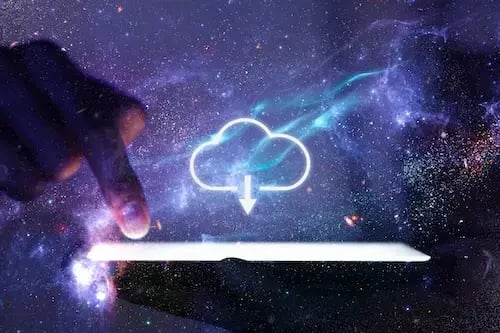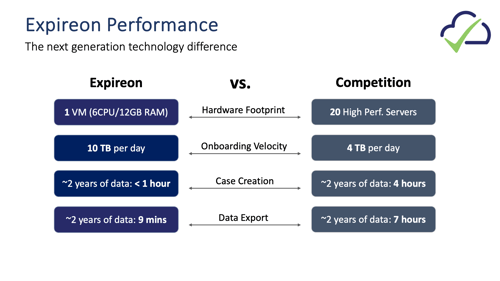What Are Hyperlinked Files in eDiscovery?
Explore hyperlinked files, their significance in eDiscovery, legal challenges they introduce, and best practices for navigating this evolving...
-3.png?width=250&height=33&name=Untitled%20design%20(18)-3.png)
Cloudficient continues to innovate with the introduction of a next generation cloud archive - Expireon. This innovation ...
Cloudficient continues to innovate with the introduction of a next generation cloud archive - Expireon. This innovation centers around paradigm shifts in the areas of indexing, data autonomy, and right-sized eDiscovery.

The first generation of cloud archives was created to address key challenges and needs emerging as organizations began to accumulate increasing amounts of data in on-premises archiving environments. Cloud archives allowed businesses to change from CapEx to OpEx, as well as free themselves from hardware provisioning and ongoing management.
As cloud archives age, companies often have pain points with time, risk, and cost. Most of these are centered around inefficiencies with indexing, vendor lock-in, and overlapping eDiscovery tools. Let’s look at each of these in detail.
One of the main issues with legacy SaaS archives is the indexing architecture. Since archives have often been used for compliance or eDiscovery, rapid search is a high priority. Because of the need for search, and issues around indexing performance, all data was indexed upon ingestion.
There are a few disadvantages of indexing everything on ingestion:
Companies looking to move to the cloud were faced with a decision that mostly provided two paths, neither were ideal.
Companies were essentially faced with deciding between two options; low cost with low visibility, or high visibility but at a much higher price.

Many companies soon found that getting large data sets out of these legacy cloud archives was a very expensive proposal. Since there was limited API access to these platforms, companies often had to rely on the professional services group of the vendor to perform exports when it came to a merger or acquisition, or if the company decided to move to another vendor. These costs would often average $8,000, or more, per Terabyte of exported data.
Then there is the issue of getting the data in a timely manner. Because data is often stored in a proprietary format, with no access via APIs, it could take excessive time to translate the data into a format that is both human and machine readable, and suitable for ingestion into a review platform. Delays at this stage of eDiscovery are at least inefficient and often unacceptable.
When the first generation of SaaS archive solutions was designed, there was a goal to facilitate the entire eDiscovery process end-to-end, where everything could be done in a single platform. The reality is that most companies will follow one of two workflows when it comes to eDiscovery:
Due to technology advances, especially cloud technology, we at Cloudficient have found a way to provide the best of both worlds with our Expireon platform.
In a head-to-head comparison with a first-generation SaaS archive, we not only outperformed it in numerous areas (ingestion speed, index and search speed, export speed) but we also provided a much lower price point.

Expireon is a next generation cloud platform that solves typical pain points often found in first generation SaaS cloud archives, specifically in the areas of indexing, data autonomy, and eDiscovery:
The final piece to this puzzle is... how do you get your data migrated into this next-generation platform? Cloudficient has always been at the cutting edge of industry changing technologies. Data migration just got a whole lot easier, thanks to Cloudficient's innovative next-gen platform that's a giant leap forward. Our data migration technology is built into the Expireon platform, making onboarding simple, secure, and fast.
Cloudficient’s unrivaled, next generation migration technology is revolutionizing the way businesses retire legacy systems and transform their organizations into the cloud. Guiding customers through every step of the process, our expert team provides the support and solutions you need to succeed.
Bring Cloudficiency to your legacy data and cloud transformation: visit our website or contact us directly.
Editor's note: This post was originally published in January 2024 and has been updated for comprehensiveness.
Explore hyperlinked files, their significance in eDiscovery, legal challenges they introduce, and best practices for navigating this evolving...
Understand the dynamic nature of hyperlinked content, how it has forever changed the eDiscovery landscape, and considerations for managing it.
Understand key differences and distinctions between hyperlinks, hyperlinked data, hyperlinked files, attachments, modern attachments, and cloud...